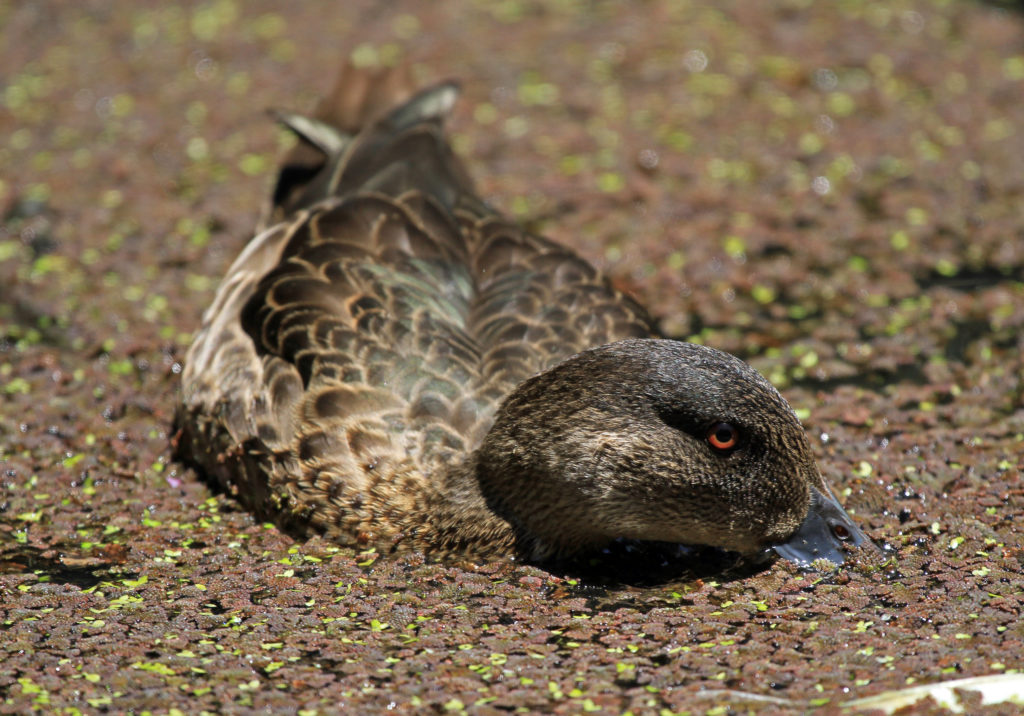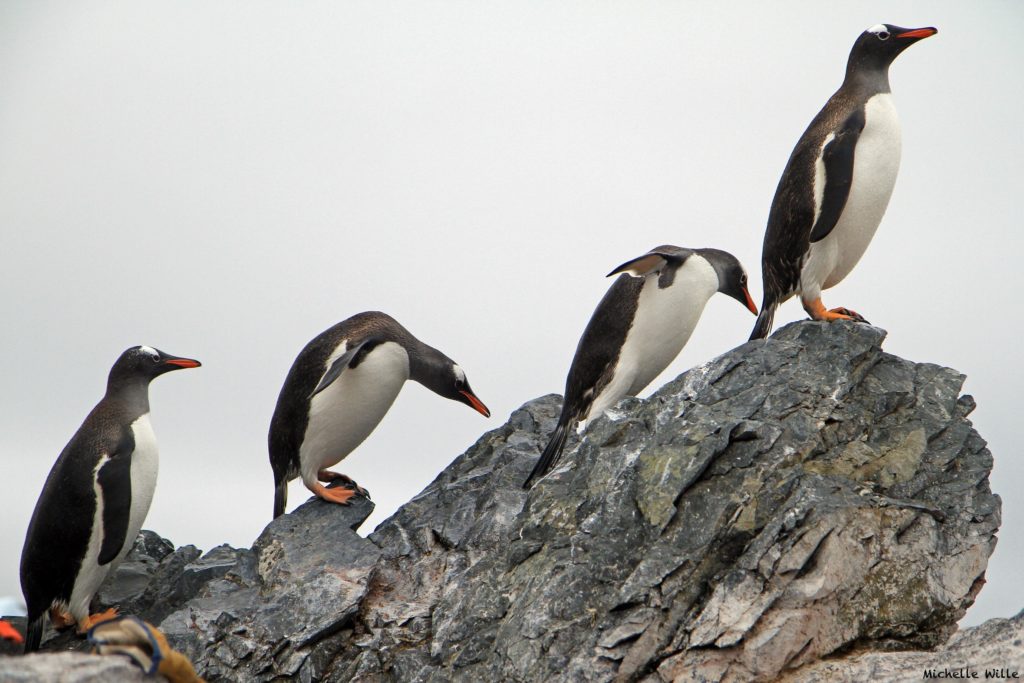
While documentaries showing penguins raising their young in the middle of perilous blizzards captivates many, in reality, most of our interactions with birds are quickly forgotten, with perhaps the exception of mild annoyance when seagulls steal our chips at the beach. These same seagulls often enjoy a free meal at landfill sites and then clean their feathers in our drinking water reservoirs. As birds are global residents, occupying diverse ecological niches, what happens in Australia doesn’t always stay in Australia – many of these species migrate to Siberia and back, connecting the opposite ends of our planet.
Melbourne’s Western Treatment Plant provides one of the most important habitats for wild birds in Australia (see here and here). This human sewage treatment facility extends over 10,500 hectares, roughly the size of Disney World, and 500 megalitres of wastewater are treated every day. The last stages of wastewater treatment consist of a series of aerating lagoons where microorganisms that require oxygen are used to clear remaining pollutants. These lagoons can be a key refuge for over 250 bird species, especially during dry periods where water is scarce in various parts of Australia.
Our research shows that active (expressed, and therefore functioning) antibiotic resistance genes are present in bacteria from all birds we analysed, from ducks in Melbourne to penguins in Antarctica.
The Western Treatment plant is a major site, not only for birds and birdwatching, but also for research activities. Birds at this site are regularly sampled for viruses by members of our team, and recently these birds served as models to study avian virus communities where we used a new method of high-throughput RNA sequencing (RNA-seq) (often called “metatranscriptomics”). RNA-seq generates an enormous amount of information that can be explored in various ways, and our research group has applied this method to investigate whether the microbes in those birds were carrying antibiotic resistance genes – whereby accumulation of these genes leads to multidrug resistance and thus, a superbug. As comparisons, we also sampled from three other locations in Australia – a remote lake in the interior, an island off the coast of Tasmania, and Western Port Bay near Melbourne city – along with penguins from two colonies in Antarctica.
The discourse around antibiotic resistance is becoming more and more important. The ramifications of this public health emergency imply that, in the near future, infections such as gonorrhoea will no longer be treatable. That is, the repercussion of this run-of-the-mill STI will be persistent and potentially serious disease, rather than mild embarrassment and a doctors’ visit. This global increase in antibiotic resistance is largely a consequence of overuse of antibiotics by humans and in animals, as growth promoters in food for animals, and a desperate attempt at maintaining the health of plants that we eat (for more information, see here). The result of all this is an increased load of antibiotics in the environment. Alarmingly, bacteria can easily transfer antibiotic resistance genes to each other via horizontal gene transfer, even if they are from different species. Antibiotic resistance is now one of the biggest threats to global health.
Our research shows that active (expressed, and therefore functioning) antibiotic resistance genes are present in bacteria from all birds we analysed, from ducks in Melbourne to penguins in Antarctica. Interestingly, we found nearly five times more resistance genes in birds in the wastewater treatment facility than in birds from all other sites. Antibiotics and antibiotic resistant bacteria commonly end up in sewage systems, and other studies have shown that they are not entirely removed during the wastewater treatment process. Although tempting to point to human waste as the cause of the higher resistance gene burden seen in these birds, it is important to note that we only observe a correlation, and a larger sample size is needed before we can be certain. Of course, it is likely that additional factors contribute to the higher resistance gene burden in these birds, including the composition of their “resident” microbial communities (i.e. microbiomes).
We also sampled penguins from two colonies, one next to a small base supporting a maximum of 16 people during summer only, and one next to a base over twice the size which houses people all year round. Although our penguin samples contained relatively few resistance genes, sure enough, the penguin colony next to the larger research base contained more resistance genes than the more remote colony; again suggesting that human impact is allowing antimicrobial resistant bacteria to persist in natural environments, even in the remotest locations.

Penguins and other wild birds are unlikely to depend on antibiotics, so why should we care whether they carry superbugs? Humans, ecosystems and wildlife are intrinsically linked, according to the ‘One Health’ concept (defined by the World Health Organization). Microbes can hitchhike on birds and return to the human food chain, for example, via water systems. Overall, it is crucial to limit the antibiotic resistance problem by halting the excessive use of antibiotics. Birds serve as sentinels of human impact on the environment and tell us a lot about how antibiotic resistance genes are spread and maintained in the environment, like the canary in the coal mine. The coal mine is antibiotic resistance, and the canary is… well… birds.
Dr. Michelle Wille, Dr. Vanessa Marcelino, Professor Tania Sorrell & Professor Edward Holmes
Dr. Vanessa Marcelino is a postdoctoral researcher at the Marie Bashir Institute for Infectious Diseases and Biosecurity at the University of Sydney. She studies bacteria and microbial eukaryotes within microbial communities to understand their interactions with each other, with their hosts and environment, and their molecular evolution.
Professor Tania Sorrell is Co-Director of the Marie Bashir Institute for Infectious Diseases and Biosecurity at the University of Sydney. She has a keen interest in the inter-relationship between the environment, plants, animals and humans – the concept of “One Planet - One Health”. She is particularly interested in tracking antimicrobial resistance its implications for human (and animal) health and for reducing this serious emerging health threat.
Professor Edward Holmes is an evolutionary biologist at the Marie Bashir Institute for Infectious Diseases and Biosecurity at the University of Sydney. He is known for his work on the evolution and emergence of infectious diseases, particularly the mechanisms by which RNA viruses jump species boundaries to emerge in humans and other animals. He currently holds an ARC Australian Laureate Fellowship
Latest posts by Dr. Michelle Wille, Dr. Vanessa Marcelino, Professor Tania Sorrell & Professor Edward Holmes (see all)
- The canary in a superbug mine - 9th April 2019
Comments